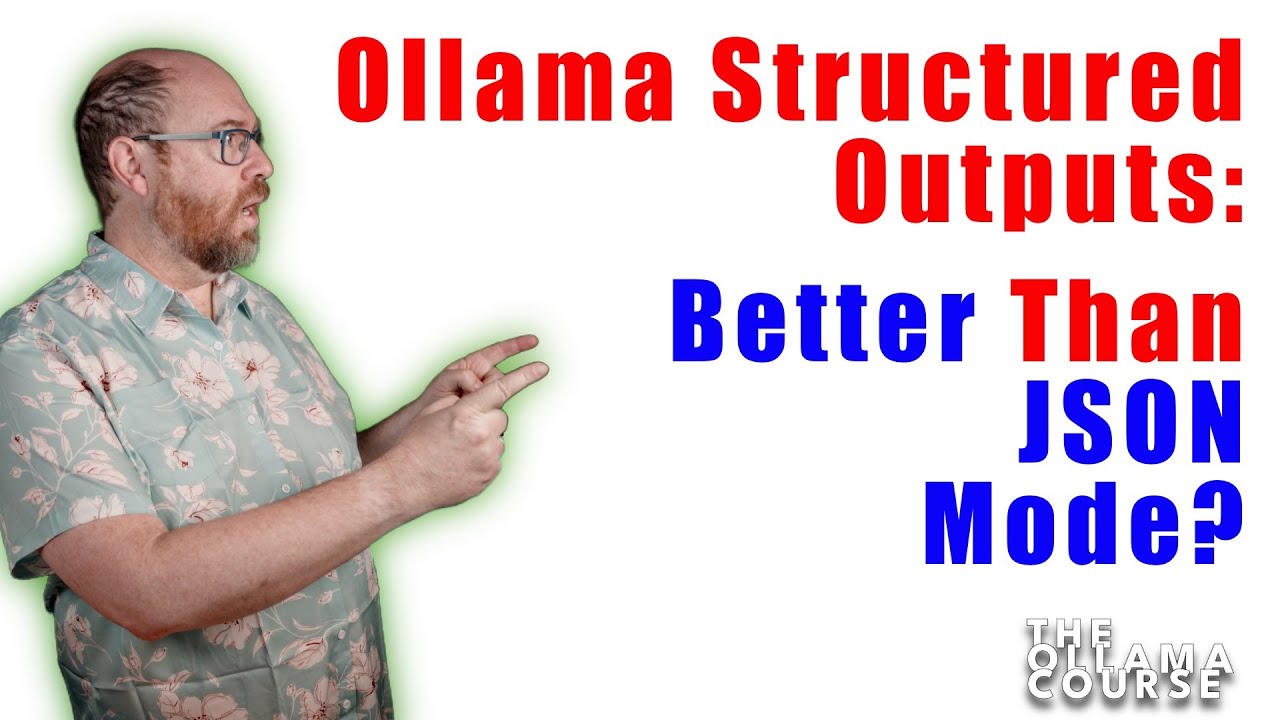The video addresses the inconsistencies users experience with Ollama’s JSON mode, particularly in handling enums and sentiment analysis, and introduces a new feature called structured outputs in version 0.5.0, which allows users to define a schema for expected AI responses. While structured outputs aim to improve consistency and control, they can sometimes lead to empty objects due to strict adherence to the schema, prompting users to choose between this new method and the traditional JSON approach based on their specific needs.
The video discusses the challenges users face with inconsistent AI outputs when using Ollama’s JSON mode, particularly in handling enums. Despite being a reliable tool for basic tasks, JSON mode struggles with providing consistent results, especially when categorizing sentiments like positive, negative, or neutral. The inconsistency can lead to unexpected values, causing developers to spend more time debugging than building features. This highlights the need for a more reliable solution that can handle specific data types effectively.
To address these issues, Ollama has introduced a new feature called structured outputs in version 0.5.0. This feature aims to improve the consistency of AI-generated responses by allowing users to define a schema for the expected output. The video explains that while the documentation mentions using libraries like Pidantic for Python and Zod for JavaScript for data validation, they are not strictly necessary for implementing structured outputs. The key difference is that the output is now formatted according to a specified schema rather than just being valid JSON.
The video provides an example of how to implement structured outputs for sentiment analysis, emphasizing the importance of using valid JSON schema syntax. While structured outputs offer more precise control over AI outputs, they are not always more reliable than the traditional method. In some cases, they may even produce less consistent results. The structured outputs feature adds a layer of verification, ensuring that the output matches the provided schema, which can lead to empty objects if the output does not conform strictly to the schema.
The video discusses the scenarios in which users should choose between structured outputs and the traditional JSON method. The newer approach is particularly beneficial for handling enums and providing a more structured specification, leading to greater consistency and control. However, the strict adherence to the schema can sometimes result in empty objects for minor variations, which may not always be justified. The flexibility of having both methods available allows users to select the approach that best fits their needs.
In conclusion, the video encourages viewers to experiment with structured outputs while also recognizing the value of the traditional JSON approach. Each method has its strengths, and users should determine which tool is most appropriate for their specific use cases. The discussion highlights the ongoing evolution of AI outputs and the importance of understanding the strengths and limitations of each approach. Viewers are invited to share their experiences and insights, fostering a collaborative exploration of AI technology.
